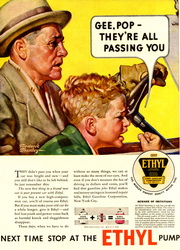The main goal of the Weizmann Institute's module is to foster positive attitudes towards RRI by both teachers and students, by focusing on the development of perovskite-based photovoltaic cells, which may provide an alternative energy solution to the energy crisis. How does this module introduce the topic of RRI?
The CoL (Community of Learners) that developed this model decided to have the teachers of the participating classes introduce RRI to their students before visits the Weizmann Institute, through the story of lead.
The teachers tell their students about the Romans, who used lead in their water pipes and vessels, including cooking pots and wine bottles. One of the "value-added" aspects of the latter case is that lead neutralized the wine's acidic taste and added a sweet taste to the wine. Unfortunately, the Romans did not know that lead is poisonous to the human body and can cause severe neurological damage, cognitive damage and sterility. Some historians believe that lead poisoning was a contributing factor to the fall of the Roman Empire
Another aspect of the story of lead is then presented – its connection with the paint industry in the early 20th century. Lead was used as an additive to speed up drying, increase durability and resist moisture that causes corrosion. Once again, these benefits were offset by the severe problem of lead poisoning, which is especially acute with children. Although this problem was known, it was downplayed by the paint industry. Eventually, lead was outlawed in paints.
The teachers continue the story of lead with a video about Clair Peterson (1922-1995), who campaigned against the oil industry's use of leaded gasoline. The addition of lead helped to reduce engine knock and to design cars with higher compression in the cylinders, resulting in greater power and efficiency. But the health hazards of lead were once again ignored or (as has been recently documented) suppressed by the oil industry. Peterson was a well-respected geochemist, one of the inventors of the lead-lead dating method, which established the age of the Earth at 4.5 billion years. In the mid-1960's, he became an outspoken opponent of leaded gasoline. His efforts, based on his scientific studies about the health hazards of lead, contributed to the outlawing of lead additives in gasoline in the United States in the mid-1970's; unfortunately, today leaded gas is still widely used in other countries, such as in Africa.
This historical case study becomes the basis for a class discussion of the ethical, social and environment aspects of lead. Students discuss questions such as "What could have been done to prevent the terrible consequences of lead use? Why did it take hundreds of years before lead poisoning was recognized on a societal level and outlawed? How might society avoid similar dangers, today and in the future?"
The teachers use the class discussion as the catalyst to present the 6 dimensions of RRI: engagement, gender equality, science education, open access, ethics, and governance. Students are challenged to address this question: "Under what circumstances could the story of lead been different? What dimensions of RRI could or should have been applied earlier?"
With their prior knowledge of RRI, based on the story of lead, the students and their teachers are now ready to visit the Weizmann Institute, where they are introduced to the module on perovskite-based photovoltaic cells. They visit the Institute's interactive science museum, the Garden of Science where they learn about the energy crisis and proposed alternative energy solutions. They learn that recent research has shown that perovskite-based photovoltaic cells have a relatively high efficiency rate. In the rest of the module, the students are challenged to address this guiding question - "Under what conditions, if any, would we (the students) agree to have perovskyte-based photovoltaic cells installed on the windows of our school?" - and prepare exhibits, based on their own ideas and research, which address this question.
This guiding question of the module is particularly relevant to the initial introduction on RRI, since perovskite includes very small traces of lead. However we believe that the story of lead can be used as an introduction to RRI dimensions for each of the Irresistible modules.


These advertisements effectively promoted the wide-scale public use of leaded gas (left) and lead-based paints (right). They were prepared by industries that ignored or suppressed research on the health hazards of lead.








